My friend slipped the largescale sucker in the water and it immediately swam into a deeper pool. The morning had delivered pretty much everything we could ask: beautiful weather, running water and plenty of fish. My friend, a visiting fish biologist, was thrilled to catch species new to him, like chiselmouth, largescale sucker and northern pikeminnow.
A car pulled off the road and a family spilled out. A guy approached us, a quizzical look on his face. “You catch anything here besides trash fish?” he asked, genuinely curious.
My friend started to fill him in on the morning; the guy cut him off.
“That’s what I mean. Trash fish. That’s all that’s in here,” he said with a dismissive wave.
Every spring, I fish for largescale suckers in the local creek. And every spring, I can count on hearing this.
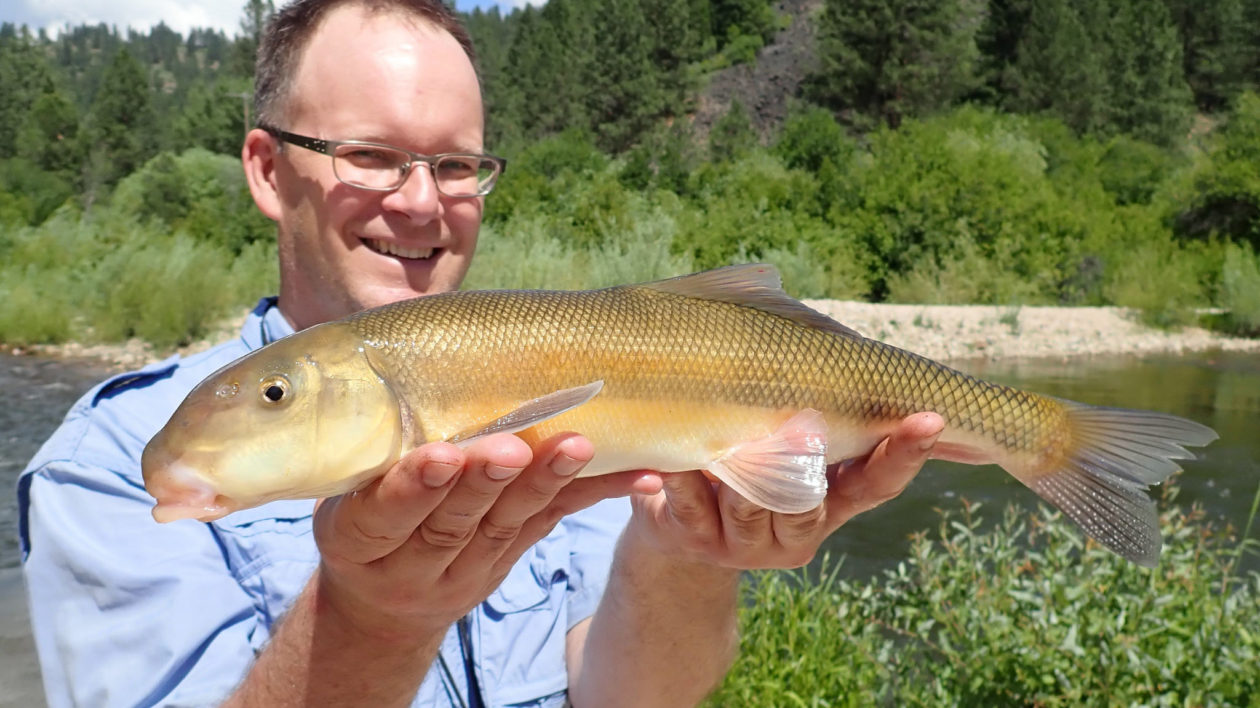
Sometimes the onlooker goes so far as to suggest I throw them on the bank. Kill them. I’ve even heard it’s illegal to throw suckers back.
These are beautiful, native fish, important species in complex ecosystems. Where does this idea come from?
Trash fish. Rough fish. Unprotected non-game fish. This is not just a classification used by ignorant anglers. It unfortunately is also a fisheries management paradigm. There are “game” fish – intensively managed and regulated. And there are “rough” fish – fish that can often be killed in any way, without restriction. Even when doing so is not based in science. Even when it’s not based on logic.
In fact, the idea of native “trash fish” is based solely on unjustifiable cultural ideas of what fish are “good” or “bad.”
It’s time to put this outdated idea to rest. It’s time to bid farewell to “trash fish.”
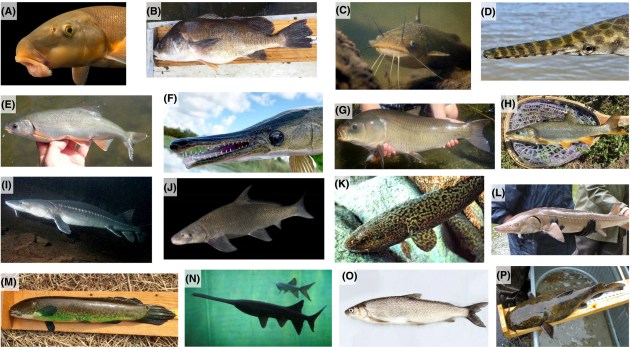
What’s in A Name?
Why is the notion of “trash fish” harmful to biodiversity conservation? And why is there such a term in the first place? I’m co-author of a new paper in the journal Fisheries that delves deeply into these questions.
The study, led by the University of California, Davis, with Nicholls State University and a national team of fisheries researchers, finds that nearly all states have policies that encourage overfishing native species. Whereas limits for trout and bass have generally become more conservative, many other species can be killed without limit or reason, at any time of year. And this is solely because they’re lumped into a category of “roughfish.”
Why? For many anglers, notions of trash fish or roughfish are ingrained. The paper argues that these attitudes are not based on science. They are based on what fish have been valued historically by white, European men. The fish they considered “game” have been studied and managed.
This assertion – that the idea of “trash fish” has its roots in colonialism, racism and sexism – has drawn predictable ire on social media. Certain websites have ridiculed it. Fox News ran a segment on the paper under the headline “Woke in the Water.”
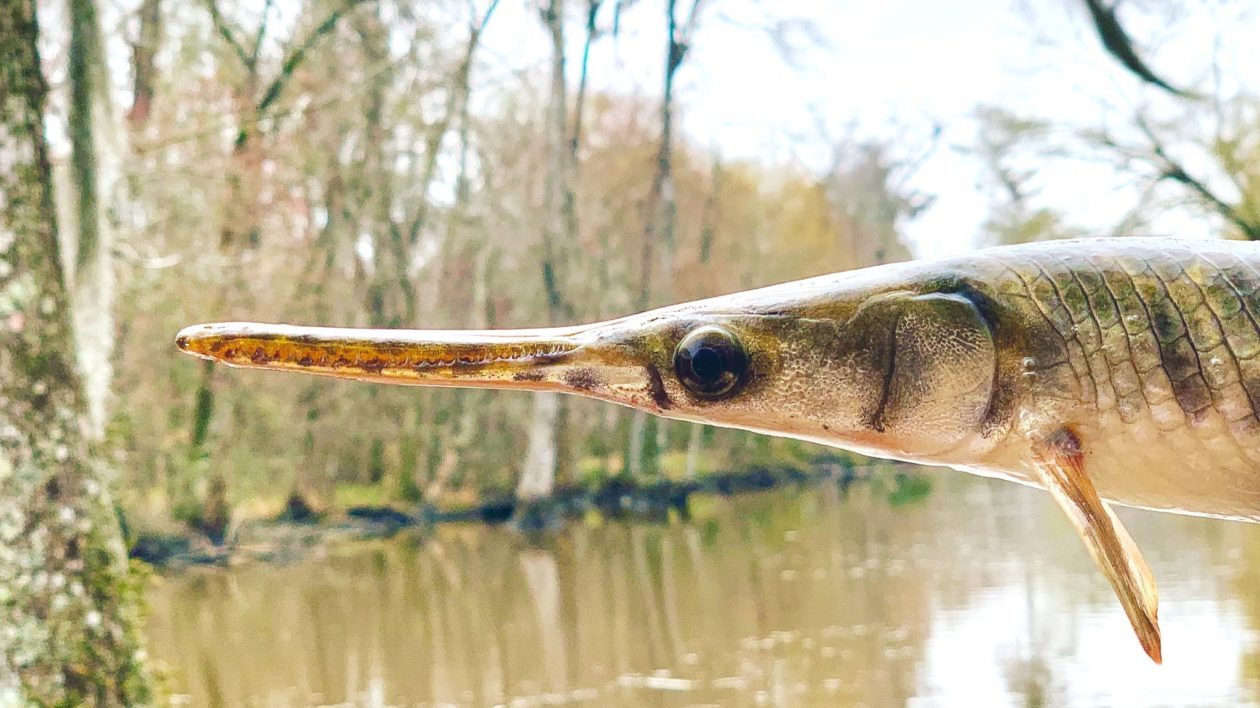
None of this changes the reality. Native “trash fish” don’t exist. It’s a human construct, based on one very specific set of cultural values. Indigenous languages don’t have a word for “trash fish.” Many cultures value fish like suckers and gar for food and sport.
As coauthor Solomon David, assistant professor at Nicholls State University, noted in the paper’s press release, ““European colonists heavily influenced what fishes were more valuable, often the species that looked more similar to what they’re used to. So trout, bass and salmon got their value while many other native species got pushed to the wayside.”
Lead author Andrew Rypel adds, “When you trace the history of the problem, you quickly realize it’s because the field was shaped by white men, excluding other points of view. Sometimes you have to look at that history honestly to figure out what to do.”
Pejorative fish names have no basis in ecology, either. The stories about gar or suckers “decimating” game fish populations are based on folklore, not fact. They serve justifications for destructive behavior, nothing more.

In fact, the fish clumped as “roughfish” are quite diverse and are ecologically important for many freshwater sytems. Some are apex predators. Others serve as hosts for part of the life cycle of imperiled freshwater mussel species. The gravel beds cleared out as spawning beds by several chub species are also essential for a long list of other fish species. So even the oft-derided chub is essentially an ecosystem engineer.
Words are important. As a writer, I recognize that daily. I also recognize that context matters. So I think it’s important to offer a sidenote about the use of the term “roughfish” (and similar terms).
A number of anglers have embraced the term “roughfish” to show that they appreciate unappreciated fishes. The site Roughfish.com in particular was founded on the idea that all fish have value, and that fish derided as roughfish are actually “the coolest fishes on the planet.” Such enthusiasts call themselves roughfishers with pride, and a core belief of a roughfisher is to treat all fish with respect. I count myself among their number. I’ll continue to call myself a roughfisher.
But the term “roughfish” (or “trash fish”) as a management construct has got to go. Because it never indicates respect. When you see “roughfish” in a fishing regulations booklet, it means that you can kill those fish in unlimited numbers. That’s not justifiable.
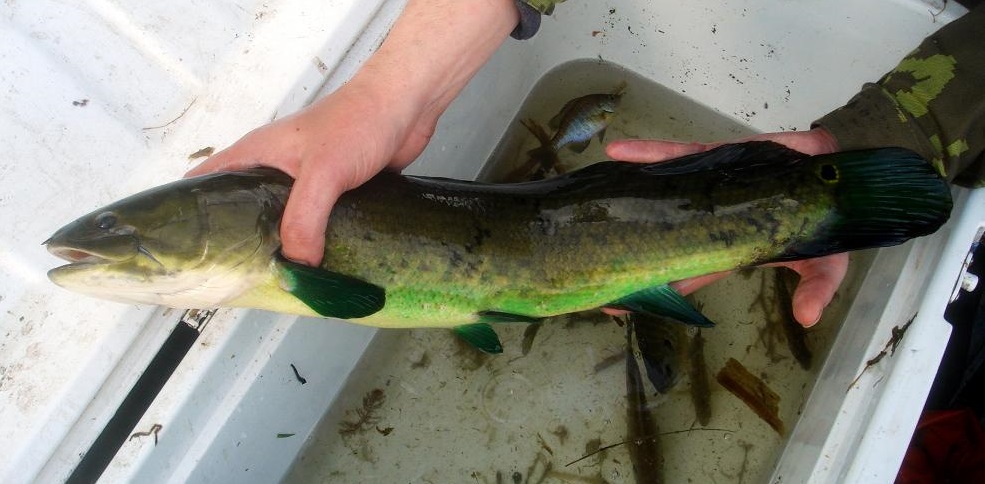
Science-Based
If you read outdoor periodicals (and I do, a lot), you will often see this phrase: “Manage with science, not emotion.” This is usually in reference to so-called ballot box biology, putting wildlife management to a popular vote. The idea is that wildlife regulations should be decided by research and evidence.
So let’s apply this to fishing regulations, because a very long list of fish species are not regulated by science. They are lumped into a category based on outdated values and folklore. For many of these species, there is very little research on what sustainable management looks like.
Some species like bigmouth buffalo and alligator gar are long-lived and slow to mature. Removing large females can have an extremely adverse impact on populations.
Bowfishing has grown increasingly high-tech, with specialized boats and lighting. The sport has exploded in popularity, but as another recent paper pointed out, regulations have not kept up.
Manage with science. That is what we are asking.
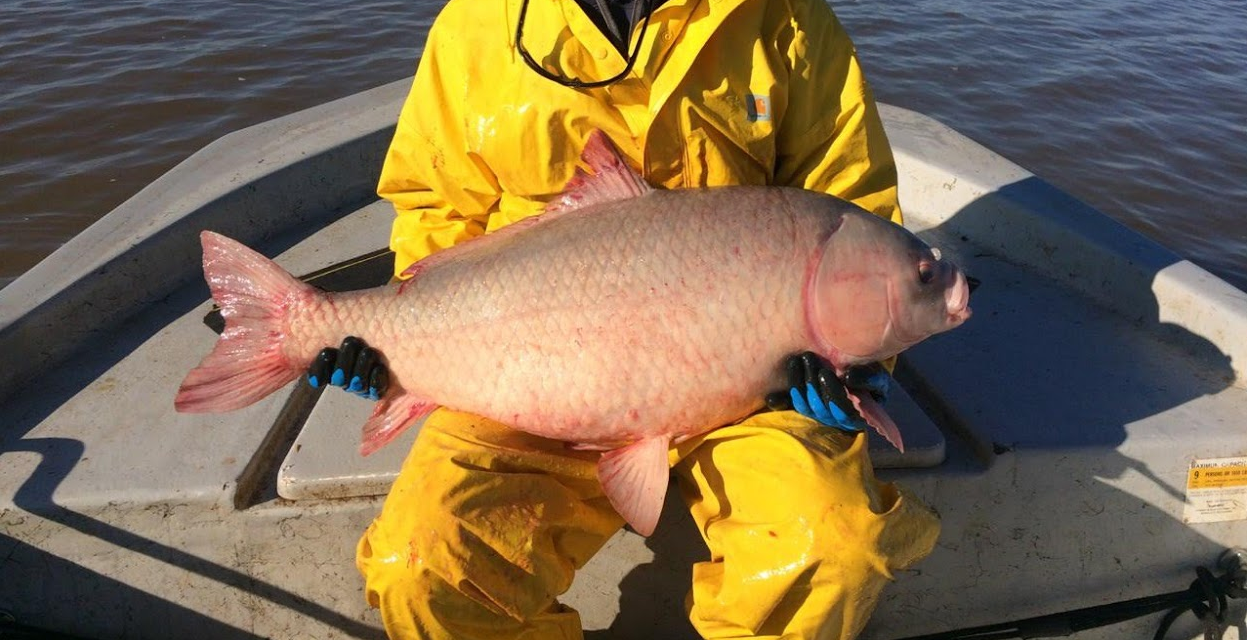
An important start would be to enact wanton waste laws for all fish species. Wanton waste laws forbid the wasting of fish carcasses that are killed. Such laws are already on the books for “gamefish” species (as well as other wildlife). I do not oppose someone keeping a few suckers to eat. But killing large numbers and leaving them to rot on the river bank is a disgusting, unjustifiable practice.
A viral video this summer showed two bowfishers counting off 1,000 gar they killed in an outing. They dumped every dead fish back into the water, a tremendous waste. Can you imagine if this was largemouth bass or walleye?
Management agencies need to step up, but I am convinced that anglers can and must play a role in native fish conservation. Anglers could be a vital force for change. And for those who think the “trash fish” moniker is too deeply ingrained for change, I disagree.
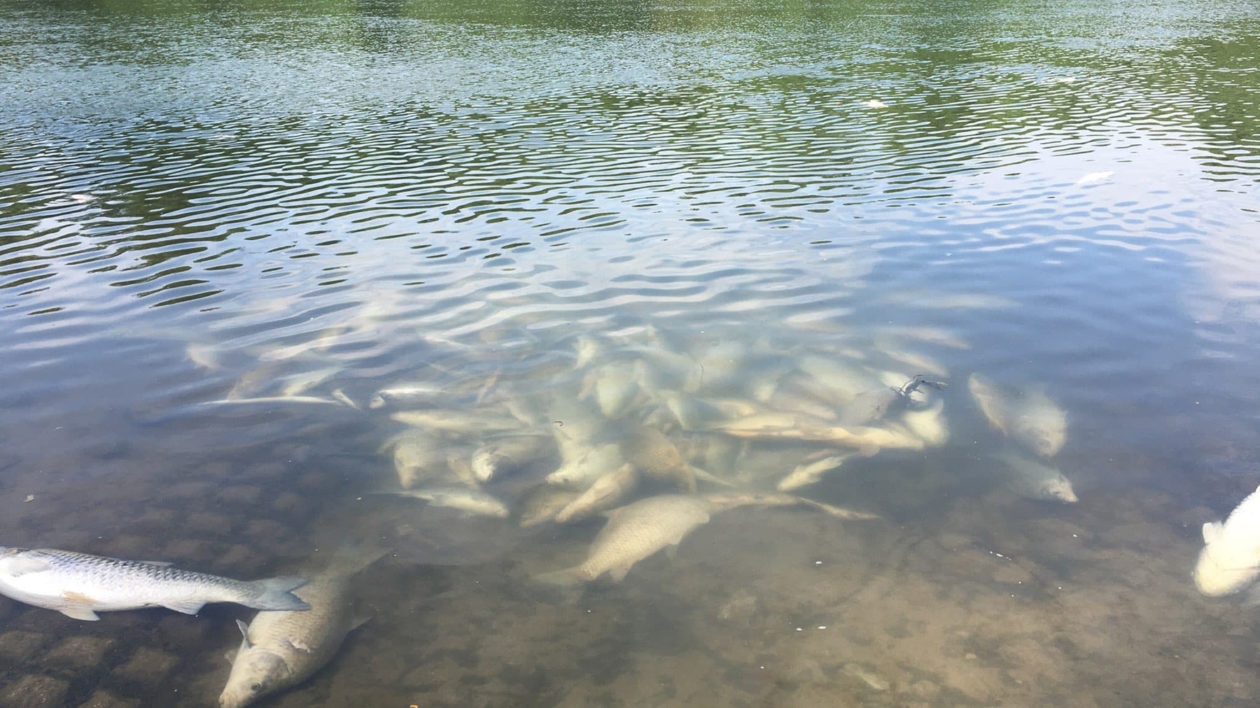
Norman Maclean’s A River Runs Through It is viewed as an almost spiritual text by fly fishers. Many believe it has substantially influenced current trout fishing ethics. Read it again. Maclean kept every big trout he caught, as did his family and friends. They filled freezers full of trout, all caught from wild Montana rivers.
Cruise along the Blackfoot and Madison today, and keep an eye out for fly anglers thumping trout on the head. You’ll be looking a very, very long time. It doesn’t happen.
The current issue of the magazine Fur-Fish-Game includes an article about historical muskie angling. As the muskie was pulled near the boat, it was shot with a gun. Every time. This was a long-accepted practice in Wisconsin and other states. There was no catch and release. That is now illegal and no one questions such a regulation.
Angling values change. Anglers recognized that wild trout populations were not limitless, that shooting muskies would soon mean no more muskies.
Many see a sucker or gar or bowfin and think of them as undesirable. But take another look: whether you’re evaluating a fish on a cultural, ecological or sporting basis, these fish aren’t trash. They aren’t being managed scientifically. It’s time for a change.
It’s time to put the term “trash fish” in the trash, where it belongs, and give these fish the respect (and management) they deserve.
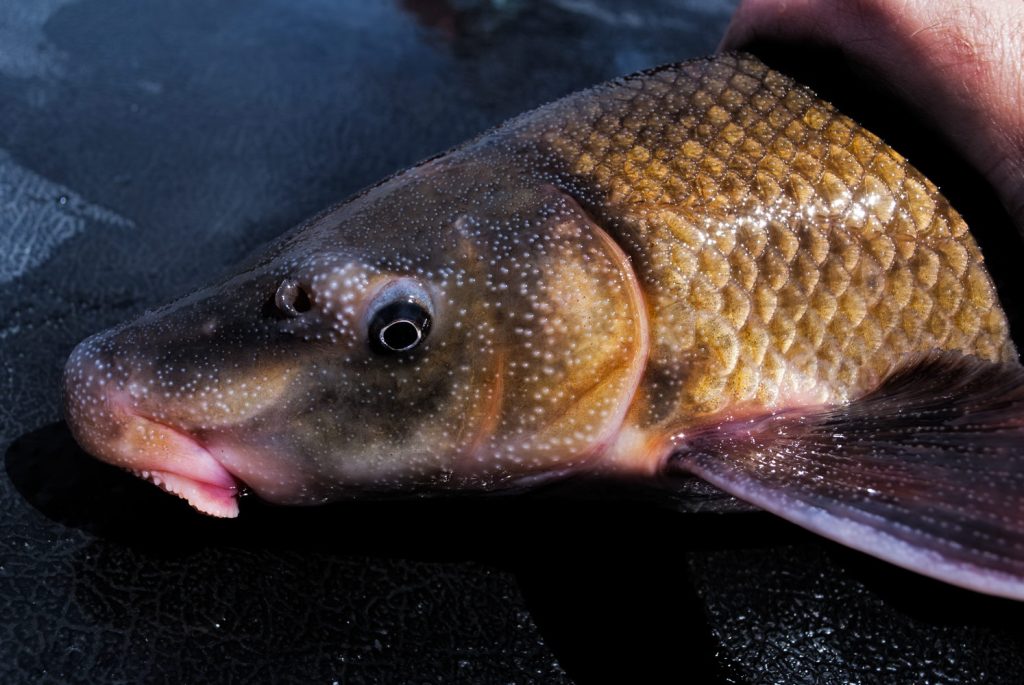



Great informative article and couldn’t agree more. Thank you.
Very interesting and important article. My son and I enjoy fishing for creek chub, dace, and sunfish here in CT. Carp are our particular favorite. The joy is in having access to such a wonderfully diverse fishery with so many different species.
Our preference in the North East US for stocked “game” fish over wild species is quite interesting. It seems our snobbishness isn’t reserved for trash fish but among game fish too. Here in the North East our rivers are stocked and managed for larger, more accessible foreign trout species (browns and rainbows) over indigenous, smaller brook trout. Our concepts of what we consider “invasive” are quite selective.
It’s also interesting that you note that our narrower cultural outlook was influenced by white European colonists – particularly in valuing trout and salmon – when in England, as one example, there’s a long history of angling for “course” fish (carp regarded perhaps highest of all), which are enjoyed by a far greater share of anglers. This suggests a more complex history and attribution of today’s American tastes.
Thank you for raising this important subject.
We should all start to avoid photographing fish out of water. Imagine someone shoving your head underwater every time they take your photo.
While not a fan of waste I don’t think I completely agree with your premise. Fisheries can be overrun with native “rough” fish who devour large amounts of more desirable “eating fish” spawn, and create ice fishing hazards as they school and fan the ice on northern lakes. From a management standpoint many MN, WI, and Ohio lakes have taken to netting the “rough” fish during winter ice-over months in order to clean out the lakes. Carp, chubs, suckers, dogfish, otherwise invasive species ect. can overpopulate a fishery. I have seen evidence of what they can do. Some bodies of water can only hold low oxygen warm warm species so there is that, but I think there is more nuance to the discussion than you would have people believe. Not all water is the same, not all fisheries are the same, and the reality is management cost money paid for by fishermen who buy licenses. They have a vote in what they want on the end of the line. Most fisheries that draw people to cast a line don’t exist in a vacuum. Angler conduct and ethics withstanding, fish species and their place in the pecking order is about more than perceptions.
John,
Thank you for your comment. I will agree that there is nuance. However, I have seen many reports of “roughfish” that supposedly “decimate” a game fishery, but there is very little evidence to back this up. The fact that many fish eat fish eggs is a fact. It has always been the case. This is why fish lay so many eggs. Also, I think there are important distinctions between native and non-native fish. You lump carp, a non-native species, in with chubs, suckers and bowfin (all native). The idea that these native species commonly overpopulate and decimate fisheries is more based on folklore than fact.
We are asking for fisheries to managed by science, not emotion. My hope is that anglers will want the same. I also hope that anglers can see that, in the natural world and in fact, there is no “pecking order” among species. That is purely a human construct. For recreational fishing to remain a relevant and justifiable activity (and as an obsessive angler, I want it to do so), anglers must work to protect freshwater ecosystems in their full diversity — not just game fish.
Thanks again for writing.
Matt Miller
Well done article Matthew!
I can agree or disagree with your comments but I don’t value your comment that points at a certain segment of the population being the reason for the label “trash fish”. As soon as you pointed a finger at a group, I stopped hearing you. That changed the entire reason for your article. I support changing labels. Blaming is not necessary. If you’ve done some nationwide parts per hundred survey to reach your conclusion, it still is a waste. Your point is to change perceptions, correct? Concentrate on that.
Hi Glenn,
Thanks for your comment. There was no blame. But the truth matters. “Trash fish” is a cultural perception. To change perceptions, we have to understand how these perceptions arose.
Matt
I agree. And while we’re at it, let’s remove “weed” from the names of many ecologically important native plant species.
THANK YOU! For years, it has broken my heart to see anglers leave fish to die beside lakes, waterways, etc., simply due to the man-made designation that they were “trash.” I appreciate you bringing this to light, and offering facts which I can give to would-be discarders of valuable aquatic wildlife.
I agree. Unfortunately, regulations, however well-intentioned, are useless when authorities lack the will, or the resources, to enforce them.
???
What is the author’s posture on (“alien”) fish species not native to North America, i.e., those brought to North America by Europeans, et al ? e.g., Tilapia, Carp [Cyprinus carpio,] Silver carp, grass carp, bighead carp, black carp, brown trout, northern snakehead, round goby, etc., and on fish species transferred from one major drainage to a different one, e.g, largemouth bass ?
W. R. (“Nick” ) Carter, III
nmcarter1@verizon.net
Hi Nick,
Thanks for your question. This essay focused on native fish, as I believe it to be an urgent conservation need. The question around non-native species is a big one, and also an issue I address in depth in my book, Fishing Through the Apocalypse. Undoubtedly, non-native fish — including “game” species — have had intensely negative impacts on North American waters. Cleary, silver and bighead carp are an ecological disaster. In many instances, how we view non-native species (and native species, for that matter) is as much a matter of values as science. So we consider snakehead to be “frankenfish” and worthy of horror movies, while the brown trout (arguably with far greater ecological impacts) is revered and celebrated. I do not think it helpful to label fish as “trash” — after all, the fish didn’t cause this, we did. But I also am not someone who believes invasive species should be welcomed (as some do). They have ecological impacts. Wherever possible, we should be protecting and restoring native fish, and prioritizing them over non-natives.
Thanks for writing.
Best,
Matt Miller
Thank you for writing this paper. I am wondering, though, what you think about “invasive” fish including carp, both the 19th century and 20th century invaders. I think we agree that the Big Head and Silver Carp deserve no respect but what of the German carp that have sort of become part of the system?
Hi Albert,
Thanks for your question. This paper (and my essay) focused on native species. It seems ridiculous and scientifically unjustifiable to just kill native species because someone deemed them “trash.”
I know a lot of anglers have various opinions on non-native species. Invasive species, including fish, are obviously a significant ecological problem. I think the discussion among anglers can go in really unhelpful ways. It says a lot about perceptions. Obviously, silver and bighead carp are a huge problem. Brown trout are beloved but can have significant impacts on native ecosystems. Snakehead are feared and reviled. They certainly are not good for ecosystems but their actual impact is often overstated. Common carp are reviled and their impact is also often overstated, but in many systems they can be quite destructive (just like brown trout). I think it is a huge topic (and I explore it in depth in my book, Fishing Through the Apocalypse).
Thanks again for writing.
Best,
Matt
Enjoyed the read and totally agree with your views. I have also been given the advice to “chuck the fish up the bank” which ,of course, I ignored! I have been told that returning certain fish was illegal…”Well f______ sue me then!” was my response. I fish the Chattahoochee down in GA and the dumping of tens of thousands of trout in it every year really mucks up the ecosystem. However on the plus side, the ospreys, bald eagles , otters and striped bass clearly approve!
Bow fishing…dont get me started on that!